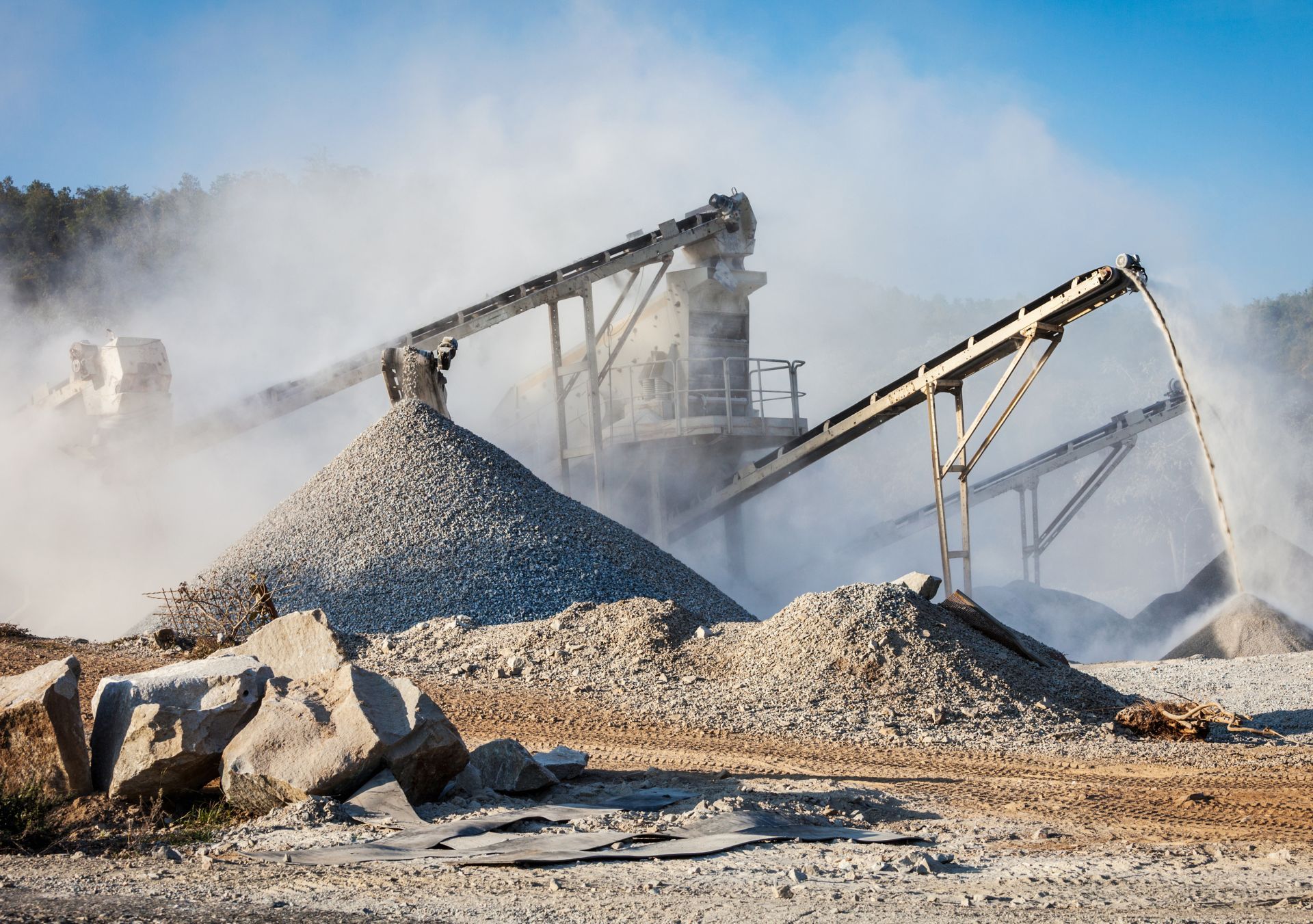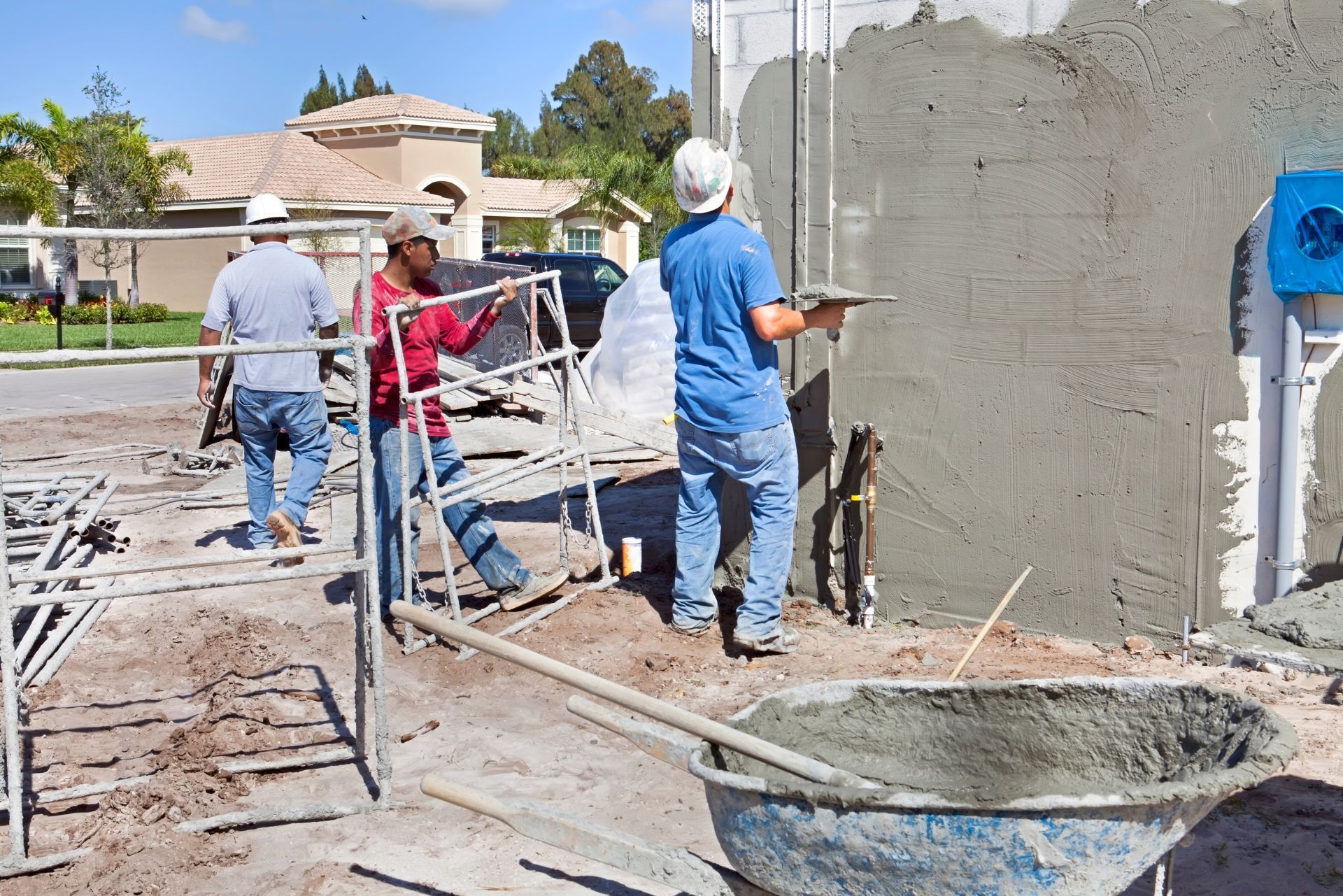
We're an independent insurance agency in Texas
Our experienced team offers services for both residential and commercial properties.With over 25 years of experience in the industry.
Contact Us
6600 Lyndon B Johnson Fwy Ste 220, Dallas, TX 75240, United States
(214) 253-0570
quotes@thephoenixinsurance.com
Working Hrs : 9.30am to 5.30pm
Texas Contractors Pollution Liability Insurance

See How We're Different:
or Call Us: (214) 253-0570

Most Common Business Policies
Index
Understanding Pollution Liability Insurance
Key Features of Texas Contractors Pollution Liability Insurance
The Cost of Pollution Liability Insurance in Texas
How to Choose the Right Pollution Liability Insurance Provider
The Process of Claiming Pollution Liability Insurance
Contact Us
This comprehensive guide provides valuable insights into pollution liability insurance specific to contractors in Texas. As environmental regulations continue to evolve, understanding this form of insurance becomes essential for contractors, aiding in risk management and ensuring compliance with state laws.
Understanding Pollution Liability Insurance
Pollution liability insurance is designed to protect contractors from financial losses due to pollution-related incidents. It covers claims arising from pollution conditions that may occur during work operations, including cleanup costs, bodily injury, and property damage caused by pollutants.
Definition and Importance of Pollution Liability Insurance
The definition of pollution liability insurance revolves around its core function: to safeguard businesses against the repercussions of pollution. This type of coverage is vital as it provides financial support in the event of accidental releases of hazardous substances, which can lead to significant liabilities.
Furthermore, with increasing public awareness and stringent regulations regarding environmental issues, having this insurance is not just advantageous; it’s becoming a requirement for many contractors to secure work contracts, particularly in sensitive environmental sectors. As environmental laws evolve, contractors must stay informed about the specific coverage requirements that may vary by state or locality, ensuring compliance and protection against potential legal actions.
In addition, the rise of corporate social responsibility (CSR) initiatives has prompted many businesses to prioritize sustainable practices. Pollution liability insurance not only helps mitigate financial risks but also aligns with the ethical standards expected by clients and stakeholders. This alignment can enhance a contractor’s marketability and appeal to environmentally conscious consumers, ultimately leading to increased business opportunities.
The Role of Pollution Liability Insurance in Contracting
In the contracting industry, pollution liability insurance plays a critical role in risk management. It allows contractors to undertake projects with confidence, knowing they are protected from unexpected environmental incidents. This peace of mind is essential when bidding on jobs, especially those involving site development, construction, and excavation.
Contracts often embed clauses requiring proof of pollution liability insurance, ensuring all parties are aware of their responsibilities. By securing this insurance, contractors not only protect their business and assets but also enhance their reputation within the industry. This reputation can be crucial when competing for contracts, as clients often prefer to work with companies that demonstrate a commitment to environmental stewardship and risk management.
Moreover, the insurance can cover a range of scenarios, from minor spills to major environmental disasters, offering tailored options that fit specific project needs. This flexibility allows contractors to customize their coverage based on the nature of the work, the materials involved, and the potential environmental impact, thus ensuring comprehensive protection against a variety of risks. As the industry continues to evolve, understanding the nuances of pollution liability insurance will be essential for contractors aiming to thrive in a competitive marketplace while adhering to environmental standards.

Key Features of Texas Contractors Pollution Liability Insurance
Texas contractors pollution liability insurance has specific features that cater to the needs of contractors operating within the state. These features help in streamlining coverage and ensuring comprehensive protection against various pollution-related claims. Given the unique environmental landscape of Texas, with its diverse ecosystems and industrial activities, this type of insurance is particularly vital for contractors involved in construction, demolition, and other activities that may inadvertently lead to pollution incidents.
Coverage Details and Limitations
This insurance typically covers a wide array of potential incidents, including sudden and accidental pollution events that lead to bodily injury, property damage, and legal defense costs for lawsuits tied to pollution claims. Coverage can extend to incidents such as spills, leaks, and the improper disposal of hazardous materials, which are critical concerns for contractors working in both urban and rural settings.
However, there are notable limitations. Most policies do not cover intentional pollution, environmental risk stemming from owned locations, or pre-existing pollution conditions. Understanding these limitations is crucial for contractors to avoid lapses in coverage. Additionally, many policies may have specific exclusions regarding certain types of pollutants or activities, which can vary widely based on the insurer. Contractors must be diligent in reviewing these exclusions to ensure they are not caught off guard by unexpected gaps in their coverage.
Policy Terms and Conditions
The terms and conditions of pollution liability insurance policies can vary significantly. They typically outline the coverage limits, deductibles, and any additional endorsements that may alter the standard coverage offered. Contractors should carefully review these elements to ensure the policy meets their specific needs. For instance, some policies may offer higher limits for specific projects or include coverage for third-party claims, which can be particularly beneficial in high-risk environments.
It is crucial for contractors to discuss their operations with insurance providers to tailor the policy effectively, ensuring all potential risks are accounted for. This can help avoid inadequate coverage and unexpected claims denials. Furthermore, contractors should consider the importance of regular policy reviews, especially as their business operations evolve or as regulations change. Engaging with an insurance broker who specializes in environmental risks can provide valuable insights and help contractors navigate the complexities of pollution liability insurance, ensuring they remain compliant and adequately protected against potential liabilities.
The Cost of Pollution Liability Insurance in Texas
The cost of pollution liability insurance in Texas can vary greatly based on several factors. Understanding these factors can empower contractors to make informed decisions regarding their coverage options.
Factors Influencing Insurance Rates
Several key factors influence the rates for pollution liability insurance, including:
- Type of work performed
- Size of the contracting business
- Claim history
- Specific risks associated with the projects undertaken
Location and environmental conditions of job sites
Contractors should assess their risk profiles based on these factors to better understand potential costs and to enable effective negotiation with insurance agents. For instance, contractors engaged in high-risk activities, such as hazardous waste removal or chemical manufacturing, may face significantly higher premiums due to the increased likelihood of environmental incidents. Conversely, those involved in less hazardous work, such as residential construction, may find more favorable rates. Additionally, the size of the business plays a crucial role; larger firms often benefit from economies of scale, which can lead to lower per-project costs.
Tips to Lower Your Insurance Premium
There are several strategies that contractors can utilize to lower their pollution liability insurance premiums:
- Implement comprehensive risk management practices.
- Regularly train employees on environmental safety protocols.
- Maintain a clean safety record with minimal claims.
- Consider bundling insurance policies with the same provider for discounts.
By taking these steps, contractors can not only reduce their insurance costs but also foster a culture of safety and responsibility within their operations. Additionally, engaging in proactive environmental assessments can help identify potential risks before they escalate into costly claims. This not only demonstrates to insurers that a contractor is serious about minimizing environmental impact but can also lead to more favorable terms during policy renewals. Furthermore, staying informed about changes in environmental regulations and compliance requirements can provide contractors with an edge, as they can adjust their practices accordingly and potentially qualify for lower premiums.
How to Choose the Right Pollution Liability Insurance Provider
Selecting a suitable insurance provider is a critical aspect of securing proper pollution liability coverage. As the insurance market is diverse, careful evaluation is necessary.
Evaluating Insurance Providers
When considering pollution liability insurance providers, contractors should assess factors such as:
- Provider’s reputation and financial stability
- Expertise in pollution liability coverage
- Customer service and claims processing record
- Available policy options and flexibility
Another crucial factor is the provider’s understanding of local regulations, as Texas may have unique requirements impacting coverage. Additionally, contractors should look for providers who are proactive in keeping up with changes in environmental laws and regulations, as this can significantly affect the scope of coverage and compliance. A provider that regularly updates its policies to reflect current legal standards demonstrates a commitment to protecting its clients and their interests.
Questions to Ask Potential Providers
When discussing options with potential insurance providers, contractors should ask specific, clarifying questions, including:
- What types of pollution are covered under this policy?
- Are there exclusions I should be aware of?
- What is the claims process, and how long does it typically take?
- Do you have experience working with contractors in my industry?
These questions help ensure that contractors select a provider that aligns with their operational needs and risks. It is also beneficial to inquire about the provider's approach to risk management and loss prevention strategies. Understanding how a provider assists clients in minimizing potential liabilities can be invaluable, as it not only enhances safety protocols but can also lead to lower premiums. Furthermore, contractors should seek testimonials or case studies from other clients in similar industries, as these insights can provide a clearer picture of the provider's reliability and effectiveness in real-world scenarios.

The Process of Claiming Pollution Liability Insurance
In the event of a pollution-related incident, knowing the process for filing a claim is essential. Understanding the necessary steps can streamline recovery and decrease potential disruptions to the contractor's business. Pollution incidents can range from minor spills to significant environmental disasters, and the implications can be extensive, affecting not only the immediate area but also the contractor's reputation and financial stability.
Steps to File a Claim
Filing a claim requires several steps, which typically include:
- Notify the insurance provider of the incident as soon as possible.
- Document the circumstances surrounding the pollution event.
- Gather any evidence that supports the claim, such as photographs, reports, and witness statements.
- Complete necessary claims forms as directed by the insurer.
Prompt action plays a crucial role in navigating the claims process effectively, as delays can complicate proceedings and possible compensation. Additionally, it is advisable for contractors to maintain open lines of communication with their insurance representatives throughout the process. This proactive approach can facilitate a smoother claims experience and provide clarity on any questions or concerns that may arise during the investigation.
Understanding the Claim Investigation Process
Every claim will undergo an investigation by the insurance company to determine its validity. This process typically includes:
- Reviewing the documentation submitted by the claimant.
- Conducting interviews with relevant parties.
- Assessing damage and measuring response actions.
Familiarity with this process can help contractors better prepare for eventual claims and ensure appropriate documentation is maintained throughout their business operations. It's also important to note that the investigation may involve third-party experts, such as environmental consultants, who can provide an independent assessment of the situation. Their insights can be invaluable in establishing the extent of the pollution and the necessary remediation efforts, which can ultimately influence the outcome of the claim.
Moreover, contractors should be aware that the insurance company may have specific timelines and requirements for the investigation process. Understanding these parameters can help contractors manage their expectations and ensure they are adequately prepared for any follow-up actions that may be required. This level of preparedness not only aids in the claims process but also reinforces the contractor's commitment to environmental responsibility and compliance with regulations.
Legal Aspects of Pollution Liability Insurance in Texas
Understanding the legal landscape surrounding pollution liability insurance in Texas is paramount for contractors. The state has specific laws and regulations that influence insurance requirements and claims.
State Laws and Regulations
In Texas, state environmental laws require contractors to comply with various regulations. Pollution liability insurance is often viewed as part of that compliance, particularly for firms engaged in activities with the potential for environmental damage.
Contractors should stay informed about any changes in state regulations that could impact their coverage or obligations concerning pollution liability insurance. For instance, the Texas Commission on Environmental Quality (TCEQ) frequently updates its guidelines, which can directly affect the types of coverage required for specific projects. Additionally, contractors should be aware of the Texas Water Code and the Texas Solid Waste Disposal Act, as these laws outline the responsibilities and liabilities that may arise from pollution incidents, further emphasizing the need for adequate insurance coverage.
Legal Disputes and Resolutions
Legal disputes related to pollution liability claims can arise, primarily concerning coverage interpretations or denial of claims. Engaging with an attorney specializing in environmental law can help contractors navigate complex legal scenarios. Such legal professionals can provide insights into precedent-setting cases in Texas that may influence the outcome of current claims, ensuring that contractors are well-prepared to advocate for their rights.
Additionally, understanding mediation and arbitration options might provide alternative pathways for dispute resolution without resorting to lengthy court battles. These methods can often lead to quicker resolutions and less public scrutiny, which is particularly beneficial in cases involving sensitive environmental issues. Furthermore, many insurance policies include clauses that encourage mediation before litigation, making it essential for contractors to familiarize themselves with these provisions to effectively manage disputes and minimize potential liabilities.
Future Trends in Pollution Liability Insurance
As the environmental landscape evolves, contractors should remain aware of emerging trends in pollution liability insurance. The sector is undergoing significant changes in response to both climate change and technological advancements.
Impact of Climate Change on Insurance Policies
Climate change is increasingly influencing insurance policies, particularly concerning liability for environmental damages. Insurers are starting to consider climate risks as part of their overall risk assessments, leading to potential changes in premium rates and coverage terms.
Contractors may need to adopt practices that reflect heightened awareness of environmental sustainability to align with these evolving standards in the insurance marketplace.
Technological Advancements in Insurance Industry
Advancements in technology are reshaping how insurance is offered, with innovations such as data analytics and artificial intelligence providing insurers with better tools for risk assessment and premium calculations. Contractors can benefit from these advancements through more tailored policies and potentially lower costs.
By staying abreast of these trends, contractors can ensure they are adequately prepared for the future of pollution liability insurance and its implications on their operations.
In conclusion, understanding Texas Contractors Pollution Liability Insurance is pivotal for operational success in today's increasingly regulated environment. By investing time in learning about the nuances of this insurance, contractors can protect their businesses and navigate the complexities of pollution liability effectively.
